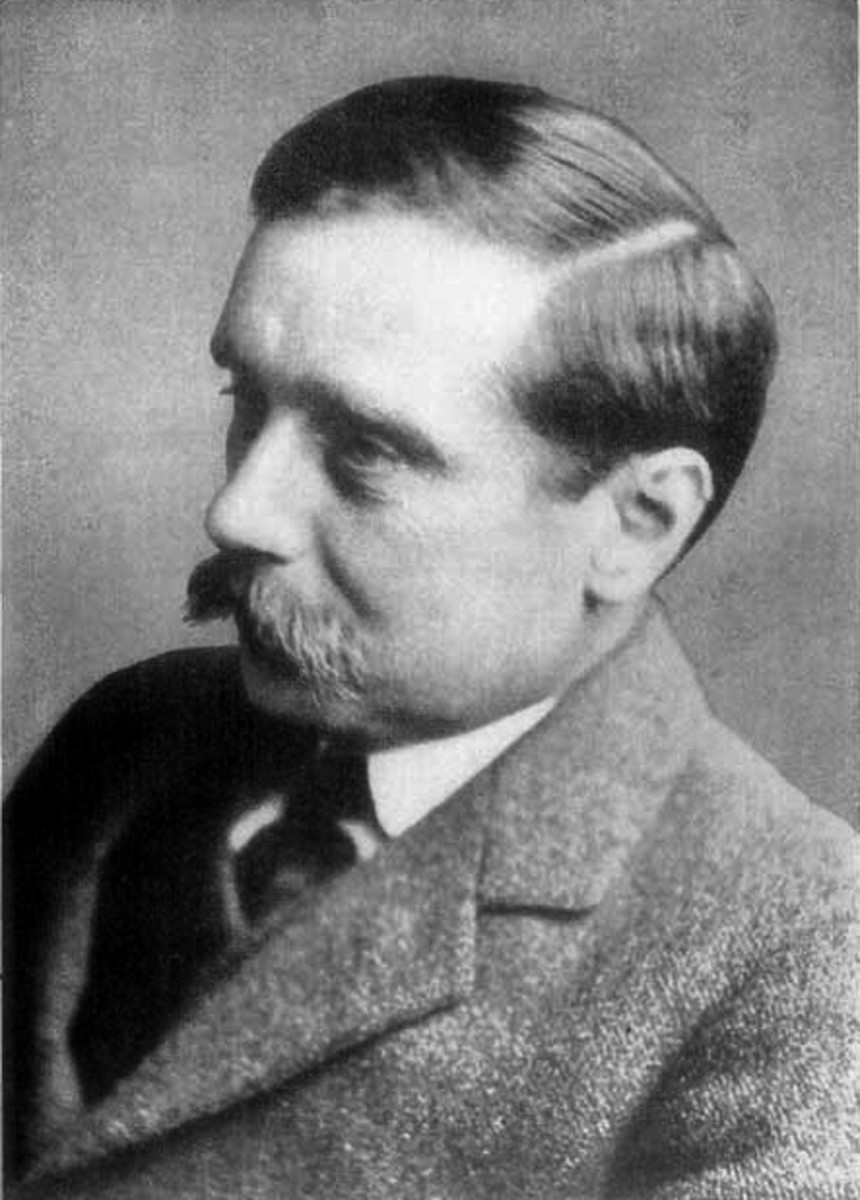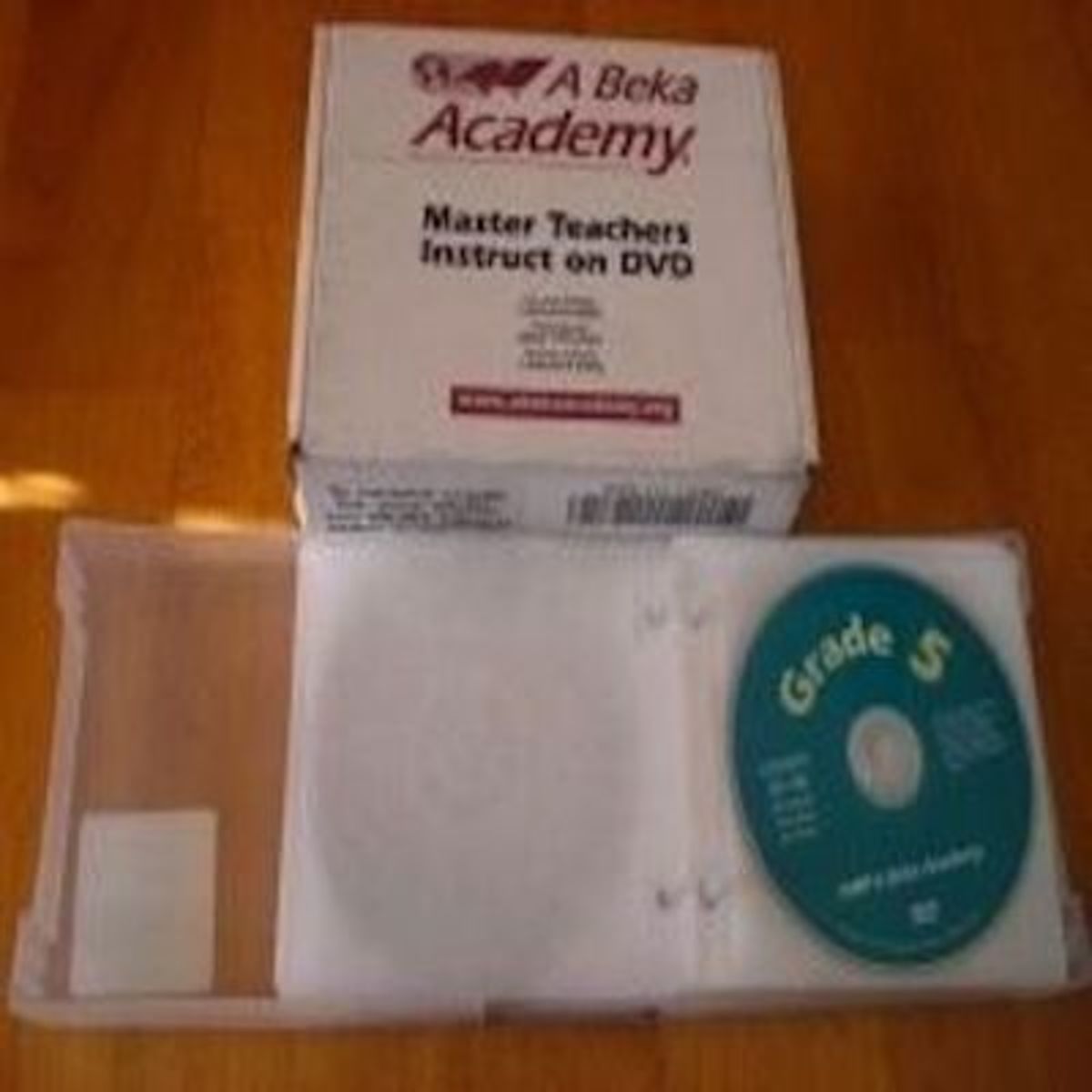Home-school Curriculum Development and Materials: Textbooks Necessary?
Physical Space
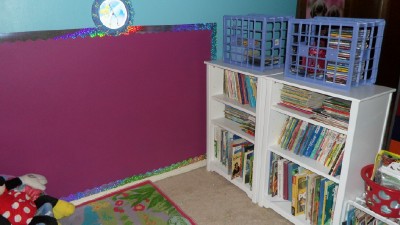
Whiteboard
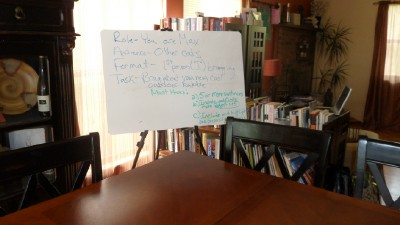
Junior Great Books Journal
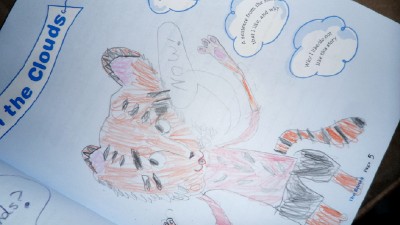
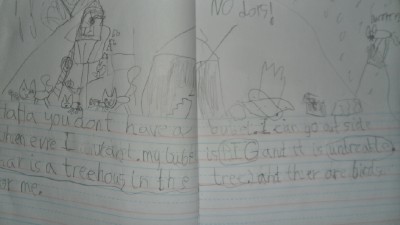
Home-school does not mean No school. Because I settled on this principle as one of my core philosophies with my daughter, I felt our homeschooling environment should be reflective of this motto, and yet still uphold my overarching belief that learning should be a balanced dance between student driven interest and teacher facilitation.
Physical Space
One of the first things my daughter and I did together was paint a chalkboard onto one wall of her bedroom using colored chalkboard paint. Our decision to begin the home-school adventure also coincided with our oldest daughter’s departure for college. As a result, we inherited new book shelves and a new reading chair from big sister’s room. This provided a comforting space for independent work and creativity.
Unfortunately, sitting on the floor cross–legged would not sustain my own physical needs for too lengthy a time, so I also needed a together space. Our dining room proved the best option, but I struggled with the decision of whether or not to mount a permanent whiteboard onto the dining room wall. I opted instead to purchase an easel and portable whiteboard, so we could also preserve the space as a family space.
These were the only two adaptations I made toward our home-education integration.
Subject-Matter Materials
Next I had to decide on subject-matter materials. Would textbooks fit into the picture? Much like my feelings about standards, I do not view textbooks as the scourge of all evil. It is the way in which they are often used within traditional settings that sometimes makes them unbearable to students. John Dewey (1859-1952), one of America’s most influential philosophers spoke exclusively about this dilemma in his work Experience and Education (available through Free Press 1997). At the time when Dewey was writing this text (first published in 1938), the idea of “progressive education” was taking route but receiving criticism from staunch believers in a more traditional form of education because of its apparent laxness in an objective approach. Dewey sought to further emphasize that education should be grounded in experience, but wanted to simultaneously remedy the misconception that education with experience at the helm meant a complete disregard of past knowledge or of a strategic planning. According to Dewey, “Unless experience is so conceived that the result is a plan for deciding upon subject-matter, upon methods of instruction and discipline, and upon material equipment and social organization of the school, it is wholly in the air.” He worried that progressive education was taking the extreme opposite approach of traditional schooling and falling victim to “planless improvisation.”
So in answer to the textbook question—yes, I decided on the incorporation of textbooks but held experience as the intention of the material being interacted with.
Which to Choose?
It does not matter, ultimately which materials a homeschooling parent settles upon. What is important is the skills and experiences that will be acquired through interaction with them. So much material is available that a kind of information literacy is necessary. The materials used should always speak to both the instructor and the student. If the instructor cannot get his or her head around the approach taken in the text, he or she will not be able to help the student develop a love for learning that particular material. Likewise, if the teacher chooses materials solely based upon his or her own interests, there is risk that the materials may not have the same impact on the learners.
The following is not a prescription for the best materials available, but rather an offering to those who may feel at a loss of where to begin selecting. Blogging is inherently a collaborative forum, and other suggested materials are encouraged in the comments section that follows.
Reading
I myself was a “Junior Great Books” child. The elementary school I attended invited students who showed interest and aptitude in reading into the Junior Great Books reading group which was a city-wide initiative. I have fond memories of the stories I encountered through those materials, so that was the first place I looked for age-appropriate reading materials. Luckily, not only does the program still exist, but they also have available accompanying reader journals. They also have teacher resources and audio versions. I ordered the second and third grade series along with the reading journal for series 3. So far, we have had a good time discussing these stories together.
Math
For math, I looked to our district. The schools in our district adopted Pearson’s envisionMATH program as a pilot study last year and chose to continue it for this year. The envisionMATH program “incorporates a blended approach of traditional and investigative learning techniques that emphasizes problem-based interactive learning strategies, embedded assessment, and data-driven remediation” (Resendez, Azin & Strobel, 2009, p.2). According to the two-year study on the program’s effectiveness, “EnVisionMATH students showed significant improvement in math concepts and problem-solving, math computation, and math vocabulary” (Resendez, Azin & Strobel, 2009, p.2).
Science
Even though students within our district at this grade level do not have a designated science curriculum, this is where the “student driven interest” came into my own decision making. My daughter has always been a naturalist at heart. Her love and interest in all things nature was paramount since before she could articulate thought. She has been chasing bugs and picking weeds from day one. Therefore, I chose to seek out a text that would help her to further investigate the world around her. I spent a great deal of time looking through demo materials, but finally settled upon the Scott Foresman Science for third grade. What I like most about it is that it not only highlights areas that are already of interest to my daughter, but also takes an investigative approach that goes beyond just reading comprehension. Each chapter begins and ends with an experiment, and within each unit there are clear connections to real world considerations of interest to someone her age. The program makes an intentional attempt to connect science to math.
Social Studies, Writing & Grammar
While these three areas are equally important, I chose not to adopt a specific textbook for them. Instead, our weekly trips to the library have focused on connecting ideas she is encountering in science or reading to the understanding of social studies in general. For instance, because she is interested in extreme weather, we used the chapter in her science text as a starting point. We later checked out videos and books at the library about extreme weather and learned about “tornado alley” which also reinforced geographic knowledge. She is now able to point to all states on a blank map where tornadoes are most likely to occur. Because this was a student-driven interest, it went beyond rote memorization that she most likely would forget after completing a map test.
Likewise, it is easy to provide my daughter with opportunities to write about what interests her while also incorporating good writing techniques and grammar knowledge. For example, while driving home one afternoon, my daughter said she’d like to win the lottery so she could invent a clear bubble that would allow her cat, Max, to roam the backyard without getting lost. As the drive lengthened, so did the details of this atmospheric bubble. The bubble would be tornado and hurricane-proof. We could all sleep outside whenever we wanted, and we wouldn’t have any need for doors on our houses. I later turned this creative idea into a writing lesson. She was to pretend she was Max bragging to the other neighborhood cats about the awesome bubble his owner had invented. The paragraph needed to be five sentences in length; was to be written in first person; had to include at least two circled adjectives; and had to have at least one prepositional phrase underlined. Not only did she write a great paragraph, she asked if she could also draw a picture to go along with it. Of course! For as William Ayers (2001) says in his book, To Teach, “It is useful, if understanding students is a central goal, to afford children multiple opportunities to choose, to initiate, to create during some part of classroom life” (p.38).
Brief Bio
Jenn Gutiérrez holds an M.F.A in English and Writing. Previous work has appeared in journals such as The Texas Review, The Writer’s Journal, The Acentos Review, Antique Children, and Verdad Magazine. Her 2005 debut collection of poems titled Weightless is available through most online book outlets. She currently teaches composition at Pikes Peak Community College and is working on a doctoral degree in Curriculum & Instruction at the University of Denver.



